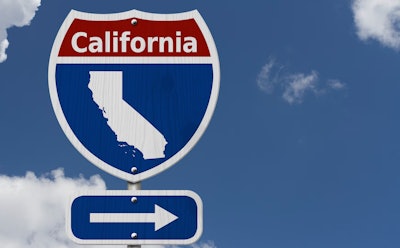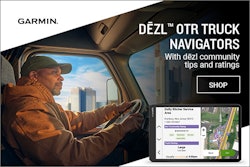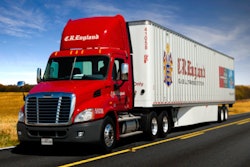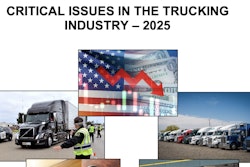
California late last week took steps to eliminate from its highways most trucks powered by gasoline or diesel, and leading trucking industry organization is crying foul.
On Friday, April 28, the California Air Resources Board approved rules that require all new medium- and heavy-duty vehicles sold or registered in the state to be zero-emission by 2036 and requires all trucks to be zero-emission by 2042.
Trucking is having its say on CARB's actions.
The American Trucking Associations President and CEO Chris Spear said CARB's decision to force motor carriers to purchase zero-emission vehicles "ignores the fact that these trucks are early-stage technologies and the infrastructure to support them does not exist." The Truckload Carriers Association President Jim Ward said pushing trucking companies "towards the adoption of vehicles that are still early in development and fraught with limitations is premature and irresponsible.”
According to CARB, provisions of the rule include:
- Fleet owners operating vehicles for private services such as last-mile delivery and federal fleets such as the Postal Service, along with state and local government fleets, will begin their transition toward zero-emission vehicles starting in 2024.
- The rule includes the ability to continue operating existing vehicles through their useful life.
- Due to the impact that truck traffic has on residents living near heavily trafficked corridors, drayage trucks will need to be zero-emissions by 2035.
- All other fleet owners will have the option to transition a percentage of their vehicles to meet expected zero-emission milestones, which gives owners the flexibility to continue operating combustion-powered vehicles as needed during the move toward cleaner technology. The flexibility is intended to take into consideration the available technology and the need to target the highest-polluting vehicles.
- Last mile delivery and yard trucks must transition by 2035, work trucks and day cab tractors must be zero-emission by 2039, and sleeper cab tractors and specialty vehicles must be zero-emission by 2042.
RELATED NEWS: Senate votes to overturn EPA's regulations for truck emissions
The ATA's Spear called CARB's actions "unrealistic" and on Friday added::
“Today, an unelected Board in California voted to force trucking companies to buy zero-emission trucks. Fleets are just beginning to understand what it takes to successfully operate these trucks, but what they have learned so far is they are significantly more expensive, charging and refueling infrastructure is nonexistent, and ZEVs are not necessarily a one-for-one replacement — meaning more trucks will be needed on California roads to move the same amount of freight.
“California is setting unrealistic targets and unachievable timelines that will undoubtedly lead to higher prices for the goods and services delivered to the state and fewer options for consumers. As it becomes clear that California’s rhetoric is not being matched by technology, we hope the Board will reverse course and allow trucking companies the freedom to choose the clean technologies that work best for their operations.
“ATA-member companies work tirelessly to deliver the nation’s freight while deploying the cleanest technologies available. Over the past 35 years, those efforts have produced a 98% reduction in truck emissions. We continue to say, ‘Yes’ to advancing cleaner technologies, but achievable targets and realistic timelines matter.”
![]() The Truckload Carriers Association President Ward weighed in on California's actions:
The Truckload Carriers Association President Ward weighed in on California's actions:
“Pushing trucking companies - who are the central link in the supply chain – towards the adoption of vehicles that are still early in development and fraught with limitations is premature and irresponsible.”
“As an industry, truckload stands ready to be at the forefront of a proactive, but realistic approach to the rollout of electric commercial vehicles that aid the protection of our environment and ensure our essential equipment is reliable, affordable, and supported by sound infrastructure. The adoption of this regulation signals a lack of awareness regarding the present gap between goals and current achievability - which if ignored will inevitably lead to supply chain disruptions that will affect the consumer and their pocketbook.”
“Calculated planning, realistic expectations and practical solutions are the answer towards advancing clean technologies. Today’s adoption of the “Advanced Clean Fleets” regulation only proves that none of those answers were considered in this misguided transition.”











